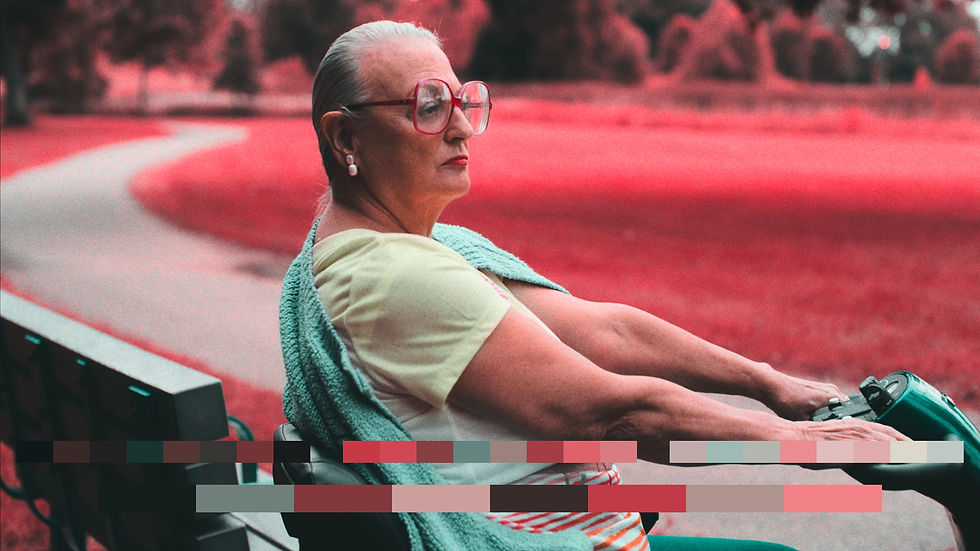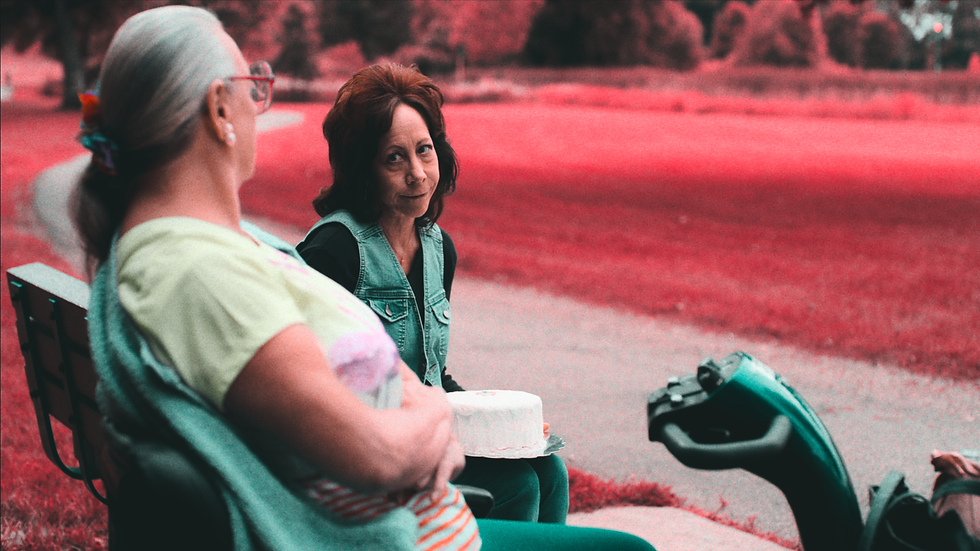









AEROCHROME EMULATION PROJECT
This project, winner of the "2023 Look Academy" was presented at the Colorist Meetup held at Arri Inc. in Burbank California, September 2023.
The stills are taken from the short film Kepler 138, regraded with a variation of the Aerochrome LUT developed for this project.
See the full presentation below.
Thank you to Dado Valentic for the invaluable mentorship, Colour Training for organising this event and Ian Vertovec for the inspiration and feedback.
Kepler 138
Director: Jacob Schwatz
Dop: Peter Mosiman
Producer: Andrew Peterson


AEROCHROME FILM
Kodak Aerochrome film was originally developed for vegetation surveys and camouflage detection. It is referred to as a false-colour infrared sensitive film, because the film foregoes a standard blue sensitive layer and replaces it with an infrared sensitive layer. In the final photo, infrared light appears as red, green light appears as blue, and red light appears as green.
It has around 3-4 stops of dynamic range, meaning that the highlights and shadows fall off abruptly. It is best utilised in bright sunlight. Polarising filters are sometimes used in combination with the film in order to avoid blown out skies. This serves to give the skies a very blue appearence, which is actually the reflection of green light, as the polariser works to block out the bright blue light. Photographers can also control the magenta and red hues by using yellow and orange filters, as well as different film processing methods such as E6 (positive) and C41 (negative).
Sources:
https://www.robwalwyn.com/aerochrome
https://www.analog.cafe/r/kodak-aerochrome-a-colour-ir-film-guide-and-review-uwi3
Images by: Karim Sahai, Richard Mosse & Dmitri (Analog cafe)

C41 NEGATIVE FILM PROCESSING
This type of processing generally gives a greater dynamic rage (about 4 stops). The colors skew towards the red/orange tones but it doesnt have a color cast like E6, meaning greater flexibility in manipulating the colors in post.







E6 SLIDE FILM PROCESSING
This type of processing generally gives a more pink/magenta quality and bakes a color cast throughout the image


log curve
ON-SET MONITORING / BASE LUT
I decided to start with making an on-set monitoring LUT that could work with any professional camera and also be used as the base for the Aerochrome emulation in the final grade. It works to shift the hues in the direction of Aerochrome, while maintaing a more normal dynamic range. It also creates a pleasing complimentary palette that moves all the different blues closer together in a turquoise direction.

E6 & C41 INSPIRED EMULATION
In creating these emulations, I wanted the look to have the intense feel of Aerochrome, while maintaining skin tones in a more naturalistic manner, that make sense within a highely saturated context. In order for the Showlut to be more functional for digital footage, I made the dynamic range around 5-6 stops. This still gives the appearance of that Aerochrome abrupt fall-off in the highlights and shadows, while enabling more of the image to be seen. As part of the Showlut creation, I also kept a polarising filter in mind. This was done by pulling down the highlights before reducing the dynamic range of the signal. I then worked towards giving the colors that extreme Aerochrome pop using a combination of saturation tools.
For the E6 look, I also added a blue/magenta color cast and I did a little bit of keying in combination with rotoscoping, in order to bring back the yellow and green in the wardrobe.
Stills taken from the short film "Bingo Night"
Director: Jordan Liebowitz
DP: Megan Richardson
Producer: Ryan Heraly





























